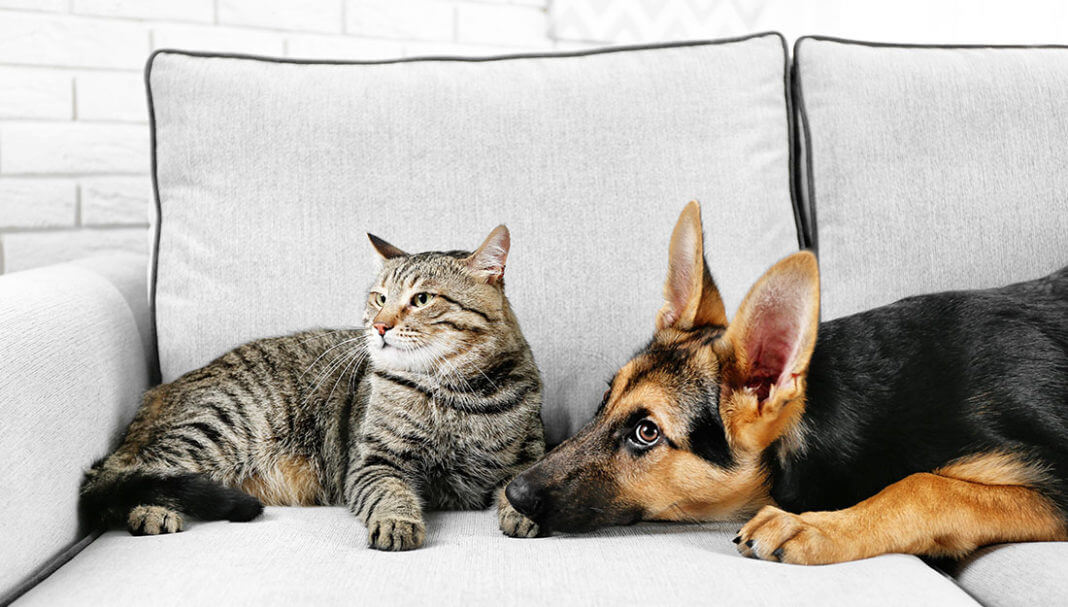If you’re constructing a rental property or making upgrades to an existing one, keeping pet-friendliness in mind can help make the property more attractive to pet parents and easier for you to maintain. Here are tips to help.
Flooring
- Choose non-slip, hardy materials that won’t show scratches or cause pets to easily slip or slide.
- Ceramic or porcelain tiles are scratch resistant and non-porous, meaning they’re less likely to absorb stains or odors. Plus, consider darker grout that’s less likely to show dirt.
- Bamboo flooring is also resistant to scratches and water.
- Hardwood or engineered wood flooring may be less optimal, since they can be more easily damaged by pet traffic. For a wood flooring look, consider luxury vinyl styles, which can look like wood but are resistant to scratches and water resistant.
Carpeting
- If carpeting is preferred, consider a style installed in squares, rather than one large carpet, so sections can be easily replaced in case of staining or damage. This is especially helpful in common areas that might get a lot of pet traffic.
- Choose lower-pile and/or tighter weave carpets so dirt and other materials are less likely to get trapped inside and nails less likely to snag.
- Keep in mind that synthetic carpet materials are often easier to clean than natural ones.
Walls
- Choose colors that are forgiving for individual units and common spaces. Snow white walls are liable to show smudges quicker than colored walls.
- Avoid flat-finish paints. A satin or semi-gloss finish will help repel fur and be easier to wipe down.
- Ensure mirrors, signage, artwork, shelving and other items in common spaces are attached securely to walls to minimize the chance that they could be dislodged and fall on pets or people.
Common Area Furnishings
- Consider rounded or soft edges vs. hard corners when making furniture choices for high traffic areas.
- Choose materials that are easy to clean, non-toxic and safe for pets, and scratch and fur resistant.
- Leather, vinyl or faux leathers are good options since fur and hair will be less likely to stick and they can be wiped down for cleaning.
- Synthetic fabrics like microfiber or microsuede are often safe, durable and easy to clean.
- For cloth options, choose a tight weave fabric so it’s less likely fur will get trapped between threads or nails will snag the fabric.
- Outdoor fabrics are another option since most are designed to repel moisture and dirt.
- Avoid wicker, rattan or sisal furniture or accessories since some pets may see those as a chew toy or scratching post, or get their nails caught.
- Patterns and medium-range neutral colors tend to hide pet hair and dirt better than very dark or very light monochromatic options.
- Blues, violets and greens have been shown to be the most relaxing colors for pets and allow them to more easily differentiate surfaces.
Common Area Décor
- Consider faux plants or be sure to check the ASPCA list of toxic and non-toxic plants for pets. Also consider planters that are out of reach to avoid pets chewing on even non-toxic plants.
- Put art high on walls where wagging tails and jumping claws can’t reach. Skip delicate or free-standing sculptural items that could be knocked over.
- If a space includes curtains or blinds, make sure the pull cords can’t be a chewing, choking or strangling hazard. Trim and/or roll up cords and include a tie-down so they are inaccessible to pets.
- Make sure electrical cords are well tucked away or covered so pets can’t chew on them.
Space, Layout and Design
- Think about your floorplan, design and décor from a pet’s perspective. What unintentional hazards might pets find? What items might be too high or too low for pets?
- Consider what pet amenities are needed inside and outside your property, including necessities a pet relief area and signage to help pet parents know any guidelines that should be followed.
Want more info? Check out our Pet-Friendly Housing Toolkit for best practices for cities, tools for rental property owners, and tips for pet parents who rent.





 Your Privacy Choices
Your Privacy Choices